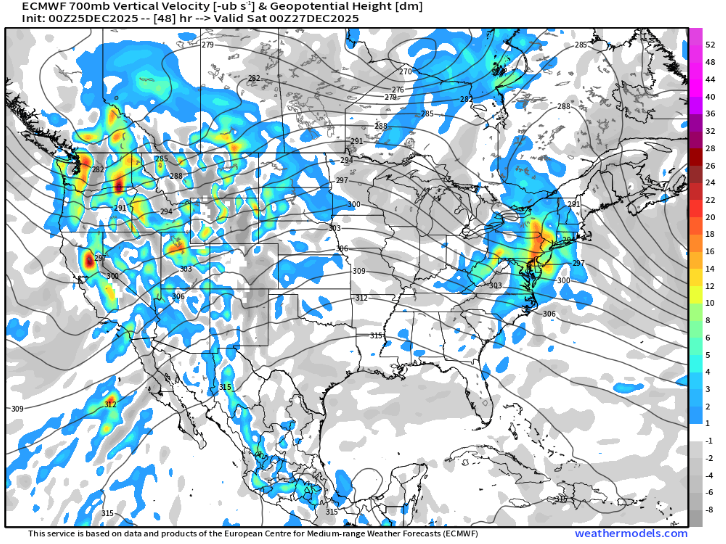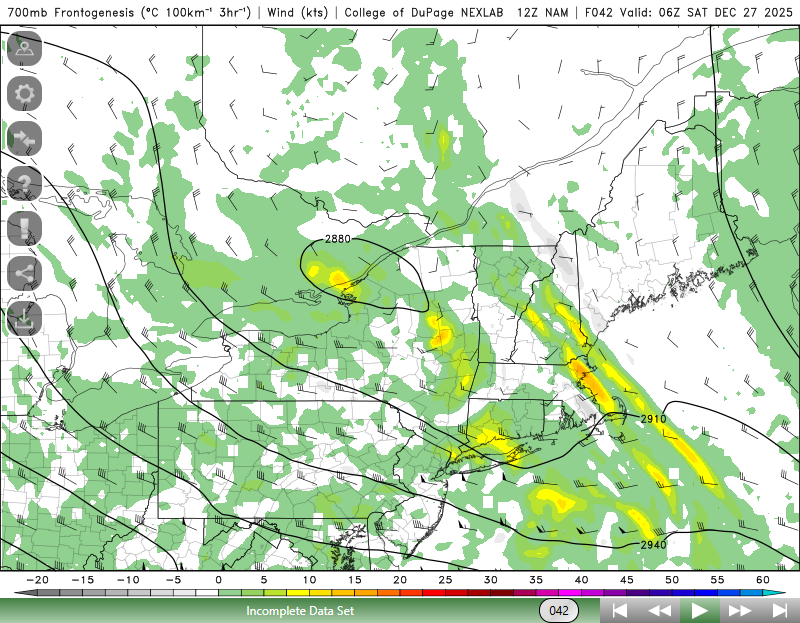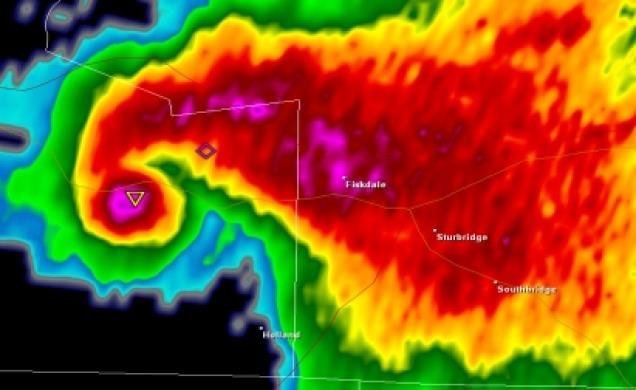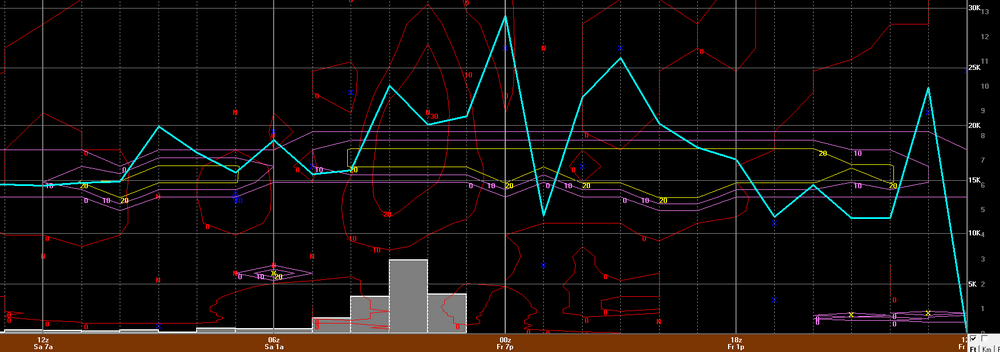-
Posts
78,516 -
Joined
-
Last visited
Content Type
Profiles
Blogs
Forums
American Weather
Media Demo
Store
Gallery
Posts posted by weatherwiz
-
-
1 minute ago, vortex95 said:
I was accounting for the snow ratios which should be 15:1 or more NYC N&E. The RRFS and HRRR are in good agreement w/ a max 10-15" swath, just I said 12-18" accounting for "surprises" (don't underestimate FGEN!)
snow ratios are definitely going to be hefty under the banding...certainly upwards of 15:1, if not maybe even upwards of 18:1. Certainly leading to some potential that could even some 8-12" totals, even with the speed. The 10-15" I don't know about...those models were also pegging snowfall rates4-5"/hour. If that happened then we would see those totals I think but 4-5"/hr might be a bit high
-
 1
1
-
-
Just now, MJO812 said:
I did yesteday and will be doing it today while taking a " dump "
Hopefully when you flush your phone goes down with it
-
 1
1
-
-
4 minutes ago, vortex95 said:
A little perspective for those complaining how "lousy" the pattern is (Re: CoastalWx LOL) and the upcoming event.
How often do you see a swath of 12-18" in the NEUS *not* from LES/OES/NORLUN and w/o any sig orographics from basically a weak clipper (pressure gets no lower than 1007 mb). Find me one!
This will make two foot plus events in the NEUS in 3.5 days that impact high population areas.
W/ this upcoming event, it also shows how important strong Arctic high pressure to the N for sig snow. Solid damning w/ low-level Arctic air in place is paramount.
Everyone seems to look for that 960 mb superbomb that "drills for oil" off just off the coast, and don't realize that you can do well in a gradual, piecemeal fashion from more subtle events. In other words, swinging for HRs all the time and ignoring singles and doubles is going to result in frustration/disappointment often.
I think many of us were spoiled from the epic period 1992-93 to 2015-16. But so far this winter in the NEUS, you add up all that has happened, it is much better than the last several. Sure, some areas still are "holed" (like South Weymouth ), but one needs to look at the big pix. I still think that 4/063 SOG at Mt Mansfield earlier this month, which was by far the most SOG so early for the location, is nothing to shake a stick at!
), but one needs to look at the big pix. I still think that 4/063 SOG at Mt Mansfield earlier this month, which was by far the most SOG so early for the location, is nothing to shake a stick at!
If this kind of "subtle" winter pattern for snowfall events continues for the rest of the winter, it's going to turn out pretty good for many I think.
The good news is I think everyone here who is in line to potentially be impacted by the band has realistic expectations. I think there is solid agreement on the max swath somewhere in the 4-8/6-10 range.
-
 1
1
-
-
5 minutes ago, Ginx snewx said:
How many will go to the bathroom to check models during Christmas dinner? Lol sickos
I would do it right at the table. Hell, I may bring my laptop and an additional monitor and toss the food onto the floor and setup shop on the table
-
Weakens a bit crossing CT but this would lead to a helluva dump. It just sucks this is going to be in and out. But I am feeling confident much of the state will get 4-8 inches. My map yesterday looks very stupid now. I think the ranges with this will have to be a bit larger than usual because of the cutoff that will occur

-
Euro may be a bit more northeast too...tough to tell but regardless looks pretty solid for much of CT with a quick glance
-
 1
1
-
-
1 minute ago, WinterWolf said:
Good points, Could be…but I don’t think they’re gonna jump yet. Too much uncertainty yet. Dry air, how far this goes NE….etc.
No disagreement there. The uncertainty is definitely there, particularly moving northeast of Fairfield County.
Here is HREF probability for 1"+ per hour rates. Right on the border getting into Hartford and eastern half of New Haven County. I guess it may just come down to how confident the forecaster is in meeting warning criteria.
-
 1
1
-
-
2 minutes ago, Go Kart Mozart said:
We should saturate quickly but this will be a concern along the fringes of the precipitation shield. The bigger concern with dry air IMO is how quickly does dry air filter in aloft...that is going to cut down the banding very quickly. This is one of the reasons I think its just a 3 hour or so period of very heavy snowfall and why I think max totals will be 6-8" versus something like 9-10" or 9-12"
-
Just now, WinterWolf said:
Nah…still a full day plus left, so no need imo.
I'm also factoring in holiday travel. Winter Storm Watches certainly raises awareness but you figure alot of people will probably be wanting to adjust plans today. In a normal scenario I think it would be watches then warnings tonight but holiday travel may factor into the decision making.
-
 2
2
-
-
Depending on how the euro swings, I wonder if we could even go straight to Winter Storm Warnings
-
2 minutes ago, Spanks45 said:
Forecasting would be boring if it were always that easy....although the wife wants to head to PA Saturday Morning and is wishing this away. All the while, 2 of the 4 kids are wishing this and refusing to leave if they have snow to play in...true snow weenies they are
I would certainly hold off traveling Saturday morning, where to in PA?
-
4 minutes ago, mob1 said:
At this point they have to, maybe they're waiting for the 12Z suite to finish but I'm sure a rather big area will be added to the watch very soon.
any changes/adjustments would mostly likely come with the afternoon package and I doubt any significant changes would be made until after assessing the Euro too.
This is a very delicate situation, we've been burned before shooting the moon with these amped solutions only for things to trend down a bit as we got closer. The trends have been great for our region, but there are still lots of uncertainties and flags to consider, particularly when determining what and where the max swath will be. This is probably something we can't even pin down until nowcasting time. @Sey-Mour Snow thoughts several posts up I think sum this up extremely well with a sharp cutoff away from the strip
-
 1
1
-
-
Just now, H2Otown_WX said:
Alright fine, you win I'm dumb

meh get your shit together
-
2 minutes ago, Sey-Mour Snow said:
I’ve definitely thought this. Would be be surprised if it we get the one max Binghamton to bdr then another slightly less max around Kevin
these certainly typically have two max areas. I like your idea of BGM to BDR for the main max zone. Hell, you can even see that on the GFS too
-
1 minute ago, Spanks45 said:
Easy there, stopped taking our jackpot down here....lol
Ultimately I think you're in a great spot...and kudos to those who have mentioned that to you over the past day or two. I thought the hope was low for such a big bump northeast, but alas here we are. There are still lots of uncertainties with this, but that is going to make for a fun (but stressful) forecast.
-
1 minute ago, Sey-Mour Snow said:
GFS looks very euro like and reasonable
You know what's going through the mind right now...what if the banding actually occurs even farther north then what guidance has (which we know is something that is rather common)...that could essentially put like along or south of the MA Pike through BDL and kevin into the jackpot zone lol
-
 1
1
-
-
Just now, tavwtby said:
yeah I would think watches for at least wor counties, CT is such a weird state with 3 offices covering such a small area.
yup...damn trees and hills and valleys wrecking havoc on the radar beams.
If I ever won a billion dollar powerball (well I would have to play the lotto first) I would pay to have a radar installed at BDL
-
 1
1
-
 2
2
-
-
I would have to think we see winter storm watches expanded through much of CT...maybe the trigger is pulled for a warning in Fairfield?
-
It's fairly unstable too into the DGZ. That could certainly argue for some rates locally approaching 3"/hr but I don't think those rates would be sustained for a full hour or multiple hours. Such a tough forecast...you almost have to have a large swath of something like 5-8" or 6-9" and then just use text to emphasize that swath ma be a bit more narrow as those totals are highly dependent on where the banding occurs and how wide the banding is.
-
NAM bufkit is out!
So far looked at a couple locations (Waterbury and New Haven with New Haven shown below).
Beautiful crosshair signature for a good 3 hours. But note...the duration of the snow, particularly the heaviest snow is going to be short lived. This is something that is going to cut back on the upper ceiling with this. It could really be difficult to pull off more than 6-7" but there are many factors to consider here. NAM bufkit even looks solid through Hartford. But it should be stressed that this is solely tied into the banding...meaning if you are not under the banding, its probably going to suck and may be difficult to accumulate more than a few inches (though most should be happy with that).
-
 2
2
-
-
1 minute ago, ORH_wxman said:
2015 had several.
2014-2015 winter?
That might be what I am thinking of then.
-
 1
1
-
-
1 minute ago, Sey-Mour Snow said:
Don't recall the last storm with heavy snow temps in the teens and wind chills around zero..
Early 2010's?
Edit: Maybe 2013 or 2014?
-
 1
1
-
 1
1
-
-
Is the NAM starting to pick up on where that fronto band will traverse? But you can see with this one...its essentially where that fronto band occurs. Outside of that band precip is pretty meager. The cutoff is going to be wild
-
 2
2
-
-
NAM coming in hot and heavy. that is a crushing even through Hartford. Hefty fronto band

-
 1
1
-






26th-27th event, coming at us like a wounded duck.
in New England
Posted
Interesting...advisory for Hartford County